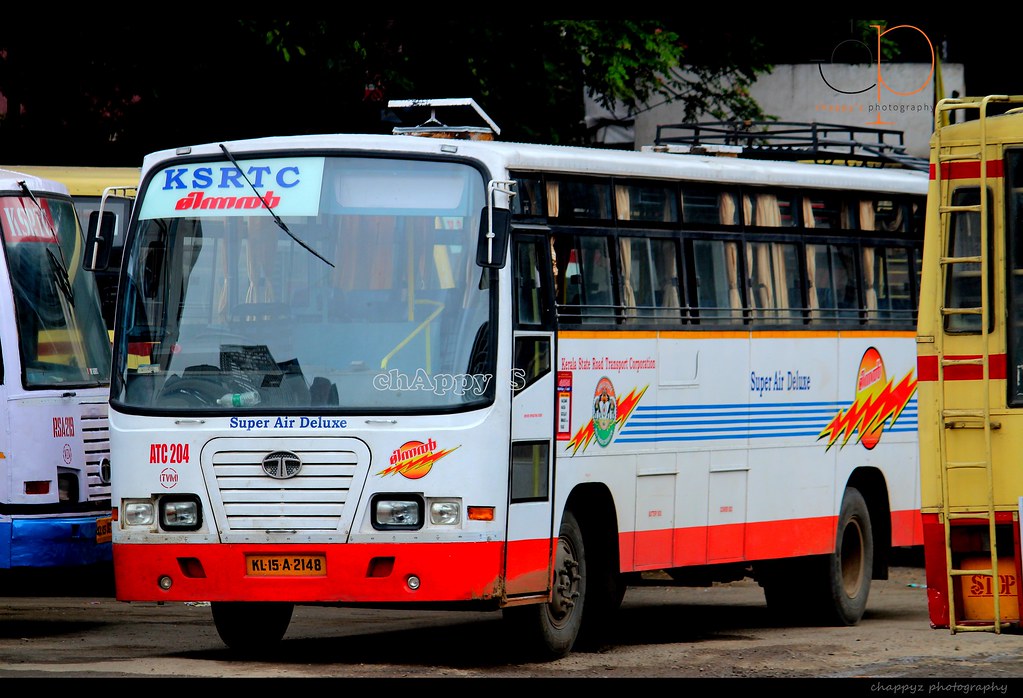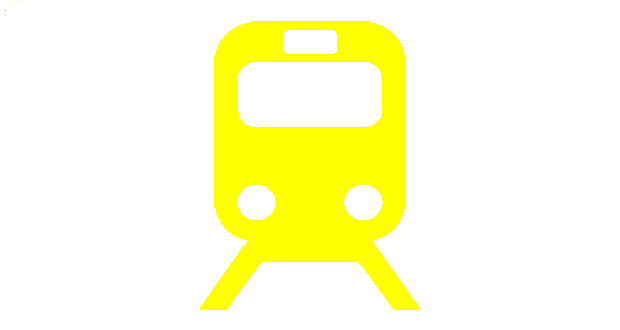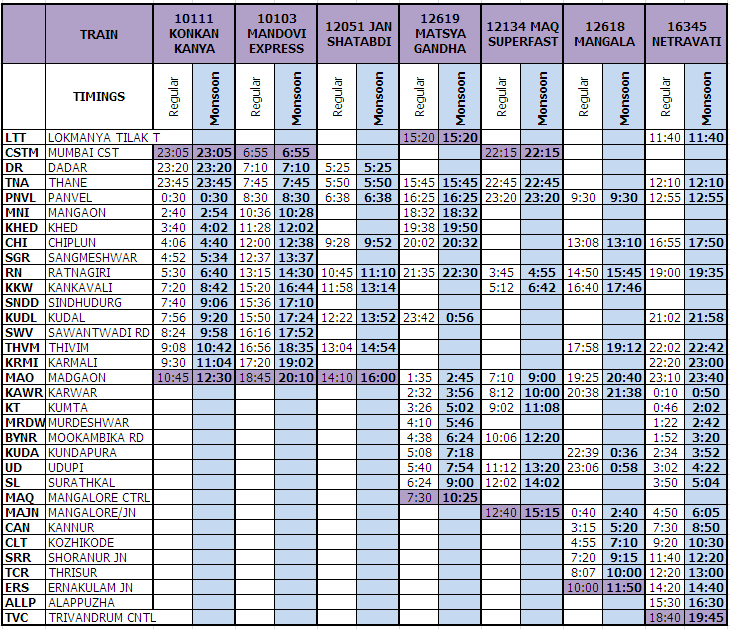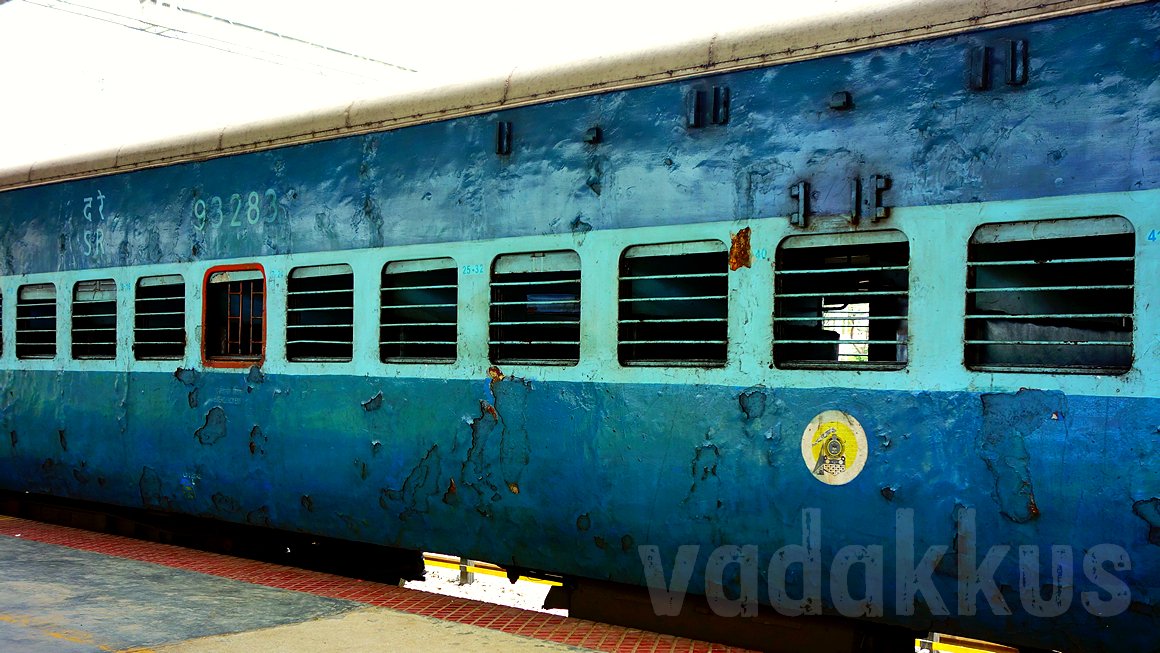The Tales of the Travails of Kerala’s Railways
There is nothing new about the story of the sorry state of the railways in Kerala. Much has been said and written about this two-decade-old story of slow, late, overcrowded, filthy old trains barely running on badly maintained tracks and stop at every other station, most of which are in terrible conditions, manned by unapologetic staff and and so on. There might have been eternal optimists who believed that things would get better one day, but unfortunately, it only has gotten worse. Horribly worse, as it can be attested by anyone who has travelled on a train in the state in recent times. For the past one year, the already slow trains have only gotten even slower, stoppages have increased, the tracks have gotten worse, the coaches are older and filthier than ever and its dream projects have been scrapped. The levels of late running have reached epic proportions as trains unendingly crawl at 30 kph, lying stranded endlessly on (double) tracks and at stations, taking an hour to run thirty kilometres. Trains in Kerala now run slower than road transport, even given traffic jams and Kerala’s notoriously narrow roads. Services are being arbitrarily rescheduled and cancelled, often without warning or alternate arrangements. The lack of punctuality, even for daily office commuter trains, is throwing lives out of gear. Commuting by train has become an ordeal so painful and frustrating that it is difficult to articulate.
Slow & Late: The Punctuality Crisis in Kerala’s Railways
Of course, to expect Indian Railways trains to run on time, where trains running 10 minutes late are considered to be “on time”, is too much. However, the late-running in Kerala is of another level, beating every other state in the country hands down. The Thiruvananthapuram railway division was recently bestowed with the enviable honour of being the 63rd least punctual railway division in the country (out of 69) with punctuality of trains averaging at an amazing 45%. Given that the division is one of the smallest in the country with just 625 km of route kilometres, and has more than 90% of its trains originating from its territory, this is, without doubt, an incredible, stupendous achievement, Applause, ladies and gentlemen! Slow and late running have just augmented terrible infrastructure and horrible trains. This late running, though is different from what we see in the rest of the country. Just have a look at this collage of timings below.
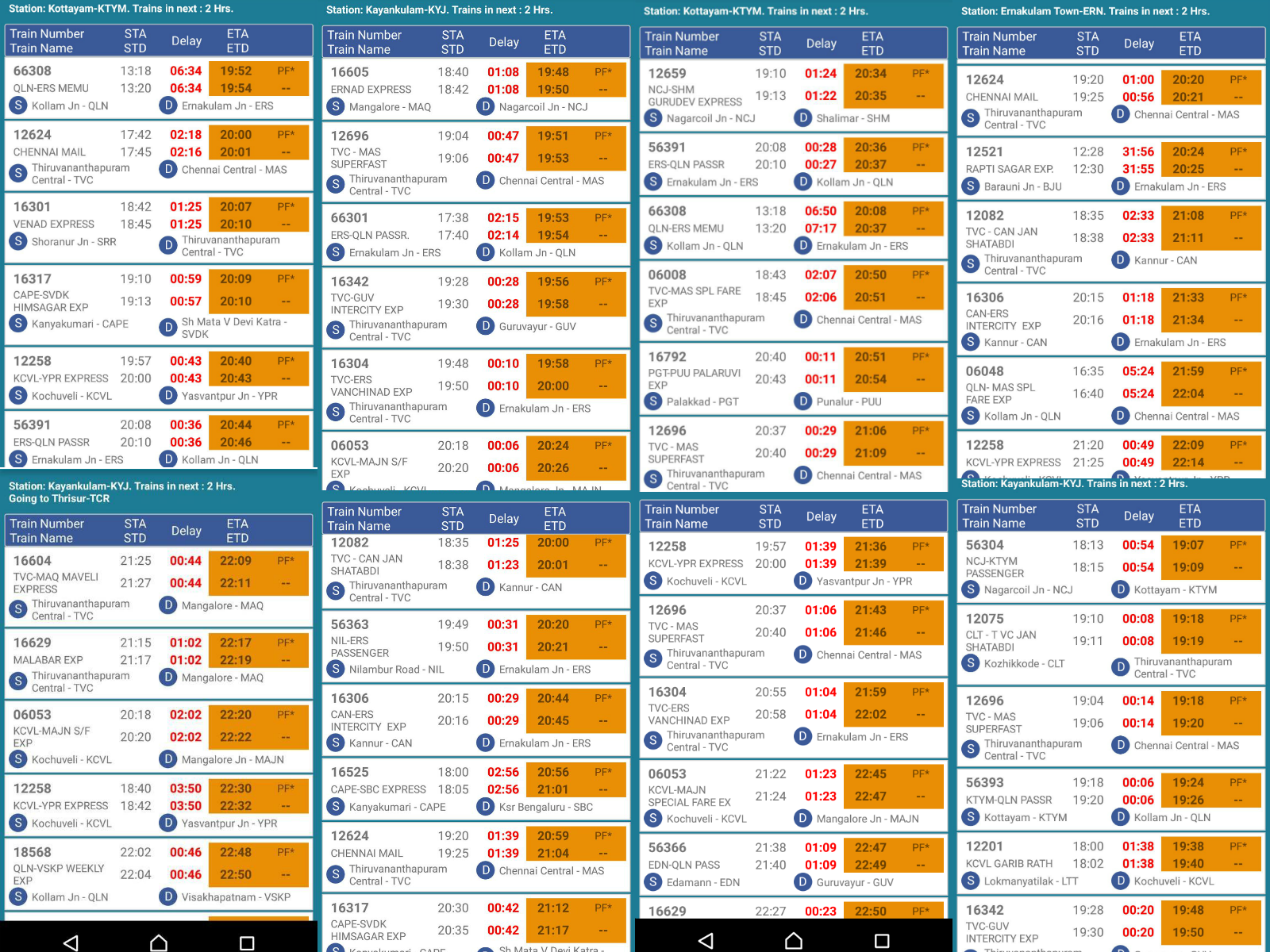
All the delays you see here mostly happened within around 100 kilometres after starting from their departing stations, mostly on time! No, these aren’t long-distance crawlers that amassed their delays after a couple of days of travelling from some faraway place but regular commuter trains many of which run within Kerala itself. No, this data is not cherry-picked data or are these instances incidental. Trains running late by hours is today a regular, everyday occurance, taking two hours to run 60 km and four for 100 km! The 200 km Ernakulam-Trivandrum stretch now takes six to sometimes eight hours to cover! Trains lose one minute for every two minutes it runs. The average speed of trains in the division is now a mind-bending 30 kilometres per hour. Thirty! The last time such speeds were the norm was during the mid-1800s; even the trains of British India ran at higher speeds. Oh, and all this goes for all trains: MEMU, passenger, express, superfast, Jan Shatabdi, Rajdhani, all are put at equal misery with their horrendous controlling. Trains are seemingly accorded priority at random and are routed and run with no logic whatsoever, passenger convenience being the least among them. The result is that all trains end up running late.
To start with, the once-pride of the railways of the state, the 12076/5 Jan Shatabdi is regularly delayed by more than 45 minutes both ways because it is held up for crossings with an empty running passenger! If this is the case of a Jan Shatabdi, which supposedly has equal priority as a Shatabdi, what hope can other trains have? Trains are halted at crossing stations even if the incoming train hasn’t even arrived at the station ahead. Six express trains are regularly made to trail a late-running passenger train for 160 km every evening, all of which end up running an hour of more late each. One minute stoppages regularly stretch to 3 to 5 minutes. An empty long-distance train running 20 hours late is given priority over an overcrowded evening commuter express. No express trains are allowed to overtake passenger trains, which in turn never run on time, while they allow random freight trains precedence over any and all trains! The irony is that they won’t allow (Superfast) express trains to overtake passenger trains but will allow some BTPN (tankers) to overtake the same Superfast. And so on and so forth. And who is responsible? No one. Here is an example of an ordeal that I personally had to endure.
Please click on that tweet to read the entire thread that follows it. That day, the 16304 Vanchinad Express, after taking two hours to cover 64 km, took three for 100 km and ultimately around seven hours to for the entire 220 kilometres. It crawled along at 30-40 kph when it was not stopped for long times at all stations. Oh and it was also overtaken once. I have fond memories of the same train covering the 220 km between Ernakulam and Trivandrum in just four hours on a single-track line, running continuously at 80-90 kph hauled by a 3100 hp WDM3A diesel locomotive way back in 2003! Today we have a fully electrified double track, a 5350 kph WAP4 locomotive and speeds of 30 kph. And this is the case for every train in the state, especially in the Thiruvananthapuram division, no matter what Rajdhani it is, having fallen far in terms of speed, service and punctuality. This phenomenon of travel times reducing as technology and time advances is a sad but true paradox, surely visible pan-India but extreme in Kerala. We are rowing backwards!
The railways are today without doubt the most backward among all public (and private) services in Kerala. They are stuck in a time warp with their 1960s rust bucket coach design, tracks, signalling, stations, running rules, customer service mentality and everything else. The people of Kerala enjoy comparatively high levels of prosperity and quality of life compared to the rest of the country, and thanks to the foreign connection almost every family has, are very well aware of the quality and levels of transportation infrastructure in other, more developed (and otherwise) countries. The average present-day Malayali, a full-time consumerist (no, not communist) who drives to her destination, shops in supermarkets and eats out thrice a week is very conscious of product and service quality and will reject anything that does not live up to her aspirations. India’s trains are far removed from those aspirations as people have moved over to faster and more shinier alternatives. Over the decades, the railways have literally rotted in the state while every other sector and index has marched ahead, especially so in the transportation sector.
Over the past seven years or so, rising car ownership has forced massive improvements of the state’s roads, compared to which the railways in the state have turned into a joke. In fact, you can nowadays reach faster by road than by taking the train, especially at night. No, not just by car, but even by bus! No, it is not a joke, KSRTC (Kerala) runs a class of high-speed very-limited-stop buses branded “Minnal” (lightning), whose USP is advertised to “reach faster than the train!“. And with curtailed stoppages and avoiding towns these buses actually manage to achieve this without even putting in much effort, regularly beating trains by a margin of a couple of hours! For instance, the Trivandrum-Palakkad Minnal and the Amrita Express depart Trivandrum at the same time (2230). The bus reaches Palakkad in six and a half hours at four in the morning while the train takes 3 hours and 15 minutes more to arrive at 0715, with a delay of half an hour extra. The Malabar Express takes 10 hours to run from Kottayam to Kasargod while the Minnal on the same route takes only eight. This is a bit much, even after considering swashbuckling KSRTC buses. It goes without saying that cars will (probably) reach faster than these buses, though you couldn’t do that trip every day.
All these problems have seriously eroded the reliability of the railways. You simply cannot trust the train anymore. What if the local/passenger train you take to commute between home and office arrives at a different time every day and then takes an hour to crawl 30 kilometres? The attraction of the train was always the predictability and ease they bought to people’s lives. If trains run like they want, answer to no timetables and are the slowest among all modes of transport, complicating lives, the resulting loss of time and predictability will prompt commuters to shift to some other means offering better comfort and speed like buses or increasingly, private cars. A year of continuous, high-profile delays has caused passengers to abandon the train to buses, cars and planes, which reflects in the passenger numbers of the Thiruvananthapuram division which has fallen by 15% year on year. And you cannot blame the people. Trains mostly never start on time from their originating stations, stop at every other station, never speed up above 60 kph, frustratingly crawl, stop and lie for a long time in wait both at stations and on tracks as delays stretch into hours. You can never tell for certain when you or the train will arrive or if it will run at all.
What is the point of a train if it cannot match the speed of a bus? What is the point of mainline express trains that take two hours to cover 60 kilometres and cannot keep their timings even by a wide margin? If I were a train in Kerala, I would be facing a serious existential crisis.
Why Are Trains Running Slow and Late in Kerala?
Commuters and observers are perplexed at why they are stuck on electrified double track line. They were always been taught that single-line crossings were the singular evil at the root of all late running, and doubling the line would be the solution to all railway problems. Well, no. The double-track fallacy is a big railway misconception. Double tracks do no good when there aren’t enough platforms, terminals and yards, and when signalling systems still use outdated manual blocks. As for electrification, it mostly is intended to improve the railways’ operating overheads and don’t do much good unless a lot of high-speed and suburban (MEMU) services are run, which Kerala does not have, and any attempt at introducing which are always thwarted. Officials claim the current situation on track renewals in the aftermath of the Karukutti accident. Even then, they are unable to say when all the renewal will get over, which seems never ending, and if trains will indeed run faster after the renewal, which seems unlikely. All said, the core reason for the late running of trains in Kerala is simply the neglect in the creation of infrastructure.

Trains in Kerala run slow and late because of the very acute lack of infrastructure in terms of tracks, signalling, platforms, terminals, pitlines, etc., ably compounded by inefficient, indifferent, apathetic and unresponsive officials at all levels who are seemingly least bothered about all these happenings because they know they will get their salary and pension no matter if trains run or not. The Southern Railway zone, which controls the Thiruvananthapuram and Palakkad railway divisions that make up Kerala’s railway network, is often accused of step-motherly treatment towards the state as it accords the least importance to the state in terms of new projects, infrastructure augmentation, new trains and so on. This is compounded by the lack of funds by various governments at the centre over the decade, which either never cared about the state or its people or took them for granted. There does not seem to be any effort to better any of this misery, as politicians still can’t think beyond for high-visibility stunts like new trains and stoppages, thinking that is “development”. Officials as always sit incommunicado on their high thrones, despite a number of damning reports and indictments from the railway ministry to passenger associations. Any number of suggestions, complaints, pleading, protesting and begging falls on their deaf ears as the only thing they seem to be doing is trying to avoid anything that would make them work.
The region that is today the state of Kerala got its first railways just ten years after the first train on the subcontinent, and only three decades after the first regular railway service in the world. The network expanded quite rapidly post-independence and until around the late 1990s had quite a robust railway network. Incidentally, this was also around the time when the politicisation of the Indian Railways was complete and the augmentation of the state’s railway infra had to begin to meet its future needs. However, as railway allocations shifted from need-based to politics, the state was unable to muster enough political muscle to to wrest enough allocation or planning mindshare to fund its railway projects while neighbouring states were running away with the goodies in terms of new lines, new projects, doubling, loco sheds, new trains etc. All those , which are all seeing fruit today, while Kerala has fallen far, far behind. A state where most of passengers actually take tickets, continues to suffer the worst of everything the railways has to offer. Today, when it comes to the kingdom of the Indian Railways, Kerala is the refugee waiting for crumbs, the orphan who nobody wants or cares about, surviving by salvaging whatever is discarded by the rest of the country. Kerala is today the garbage bin of the Indian Railways.
This “neglect in infrastructure” is much more complex than some bad coaches and speed restrictions. It indicates wholesale neglect in creation of any kind of railway infrastructure in the state like new tracks, terminals, signalling, stations, doubling etc which would’ve enabled better running of trains in quality and quantity. In the following series of chapters we will chronicle this all-encompassing neglect. As a first, we will see how Kerala has the worst railway infrastructure in India.

